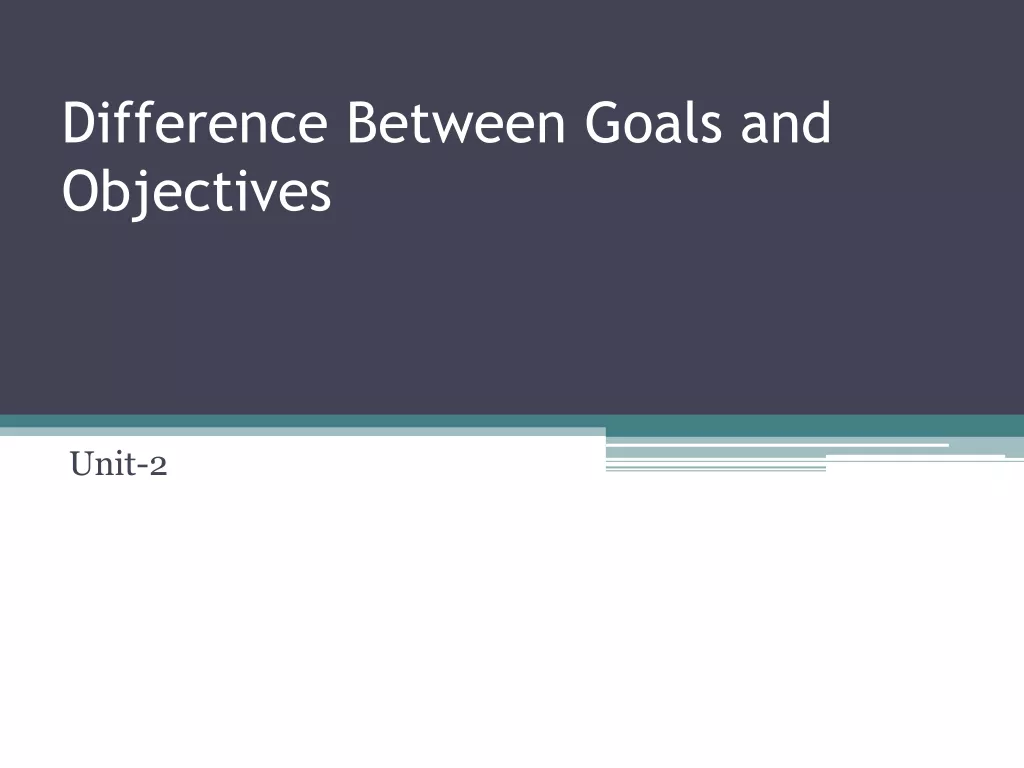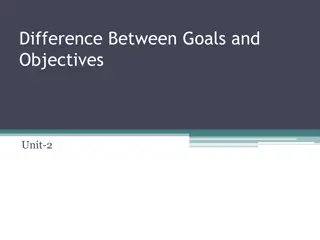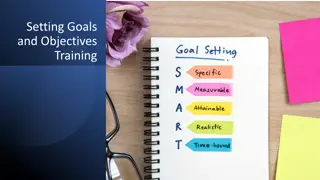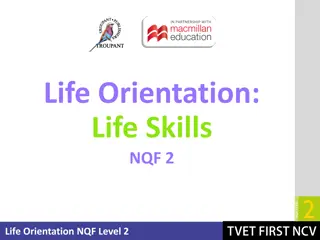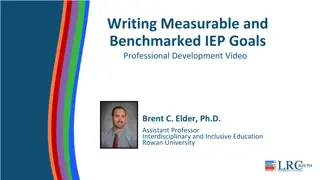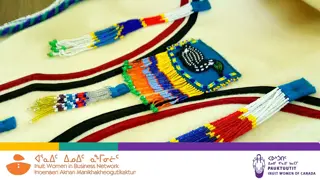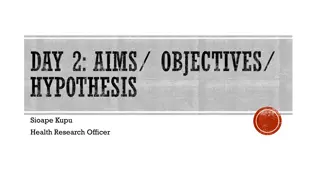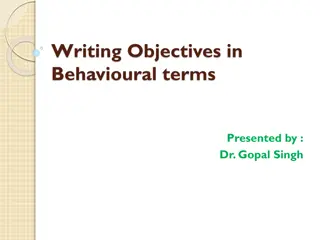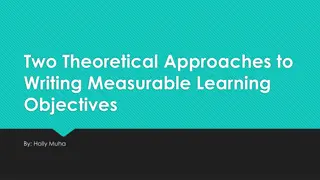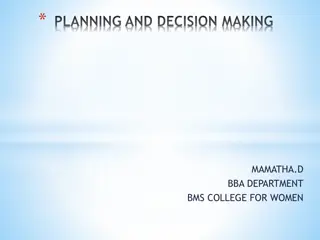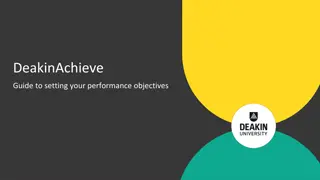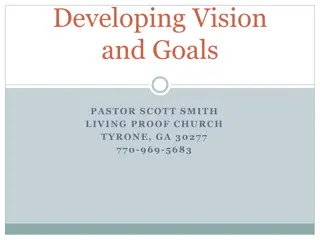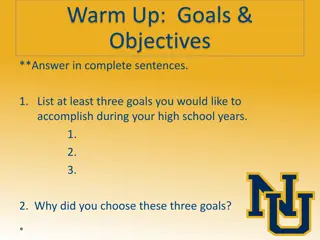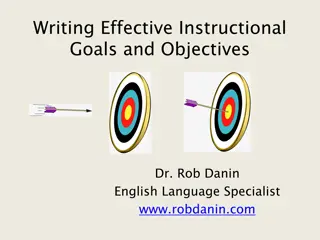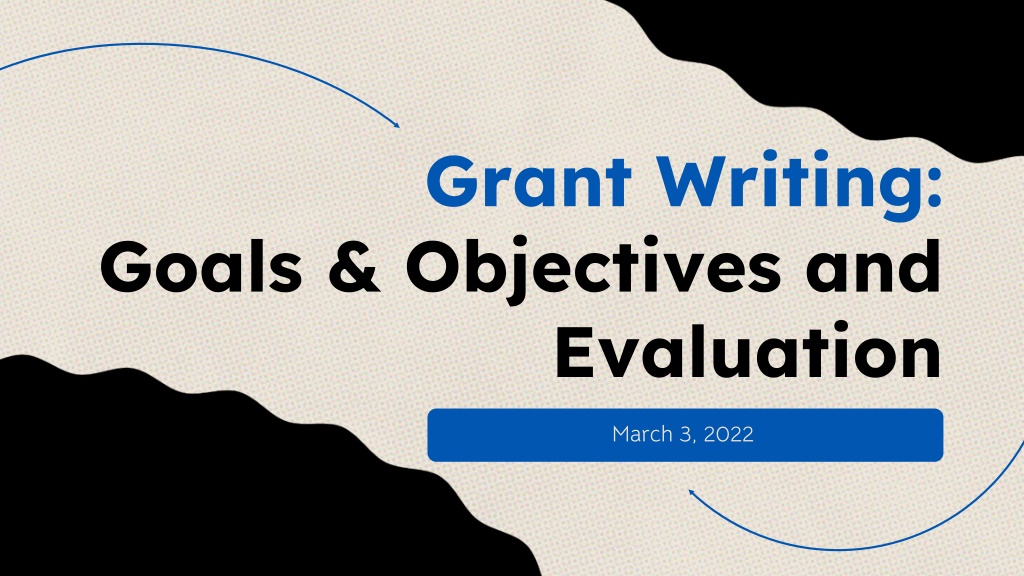
Effective Strategies for Grant Writing Success
Discover key strategies for successful grant writing, including setting goals and objectives, creating evaluation plans, and understanding capacity assessments. Learn how to align your program design with funding requirements and develop a clear management plan. Gain insights on budgeting, evaluation methods, and engaging stakeholders effectively.
Download Presentation

Please find below an Image/Link to download the presentation.
The content on the website is provided AS IS for your information and personal use only. It may not be sold, licensed, or shared on other websites without obtaining consent from the author. If you encounter any issues during the download, it is possible that the publisher has removed the file from their server.
You are allowed to download the files provided on this website for personal or commercial use, subject to the condition that they are used lawfully. All files are the property of their respective owners.
The content on the website is provided AS IS for your information and personal use only. It may not be sold, licensed, or shared on other websites without obtaining consent from the author.
E N D
Presentation Transcript
Grant Writing: Goals & Objectives and Evaluation March 3, 2022
Series Topics Goals & Objectives Using the RFP and N.A. to guide these; evaluation methods Unpacking & Needs Using a NOFO to guide planning; how to write a needs assessment Program Model Program delivery; credibitliy; capacity; community Budget Using program model to create this; attributable vs. inappropriate costs
Agenda 01 02 Recap Learning Outcomes What to expect from today s session 04 Evaluation Plan How to create a meaningful evaluation plan Review of yesterday s session and materials 03 Creating Goals & Objectives Using the NOFO and program design to establish goals and objectives
01 Recap
ISBE Nita M. Lowey 21stCCLC RFP
Capacity Assessment 8 (1 SC; 5 YDS; 1 Academic Coord.; 1 SG) 6 3 Projected # of staff Projected # of program areas # of program hours/day Student program interest level Change impact Low Medium High Grade levels New programs Resources 3rd, 4th, 5th, 6th, 7th, 8th Conflict res., STEM, wellness Partner 1 Partner 2 Partner 3 LAC? YAB? Jane Doe James Cox Site Coord. Principal
02 Learning Outcomes What to expect out of today s session
Learning Outcomes Series Topic Outcome 1 Outcome 2 Outcome 3 Identify key stakeholders and partners Gap analysis representative of your community Unpacking & Needs Assess team capacity Organize a management plan Identify program structure Program Model Assess org. capacity Methods & tools for evaluation Goals & Obj. Types of success Goals vs. objectives Learn the parts of a UGB Discuss budget components Outline a budget narrative Budget
03 Creating Goals & Objectives
Goals vs. Objectives Goals Objectives General statement of what you want to achieve. Define strategies or steps to take to attain the identified goals. Example: Example: 1. 15-minute full body stretch every morning for 1 month Hip mobility routine before every workout for 1 month Practice splits after mobility routine and stretches To be able to do the splits. 2. 3.
Resources to Guide Goals Program Objectives Purpose of program as intended in the RFP Pg. 8 Performance Measures Intended outcomes of the program Pg. 10 Program Design Greatest areas of intervention
Goals & Objectives Objective 1 Goal Objective 4 Objective 2 Objective 3
Goals & Objectives Objective 1 20% of regular participants will show a 10% increase in homework completion. Objective 4 Objective 2 Objective 3
04 Evaluation Plan
Types of Success Outputs Record the actual services that a program delivered Outcomes Indicates progress towards achieveing the intended result of a program.
Example Goal: 20% of regular participants will show a 10% increase in homework completion. Success: (outcome) At the end of Q1, 7% of participants increased homework completion.
Impact of Evaluation Successes, challenges, areas of growth, progress towards intended goals, important intervention areas, effectiveness of implementation strategies, quality of staff
What to include External Evaluator When possible, use an external evaluator. Reduces bias and allows for more fidelity in Specific Questions Include questions that are linked to the defined goals and objectives evaluations. Stakeholder Feedback Allow your partners and members of the community to evaluate impact Assessment Data Report cards, state assessments, progress reports
IL Afterschool Quality Standards
Jamboard Evaluation Results
Evaluation Tools IL-QPSA YPQI REL s Toolkit Evaluation tool that identifies program strengths and challenges, ending with an improvement plan Step-by-step process for conducting your own program evaluation. Online strengths-based self-assessment tool based on the IL Afterschool Quality Standards
Upcoming Funding Opportunities
Upcoming NOFOs RPSA-YD NOFO out now! ACT Now One-Pager 21stCCLC Possible competition in March. FY13 Cohort reapply Afterschool Programs NOFO out now! Annual application process. Full Service CS Fingers-crossed for a competition next school year!
Series Topics Goals & Objectives Using the RFP and N.A. to guide these; evaluation methods Unpacking & Needs Using a NOFO to guide planning; how to write a needs assessment Program Model Program delivery; credibitliy; capacity; community Budget Using program model to create this; attributable vs. inappropriate costs
Thanks! Do you have any questions? gillanin@actnowillinois.org (312) 714-0182 Actnowillinois.org CREDITS: This presentation template was created by Slidesgo, including icons by Flaticon and infographics & images by Freepik

